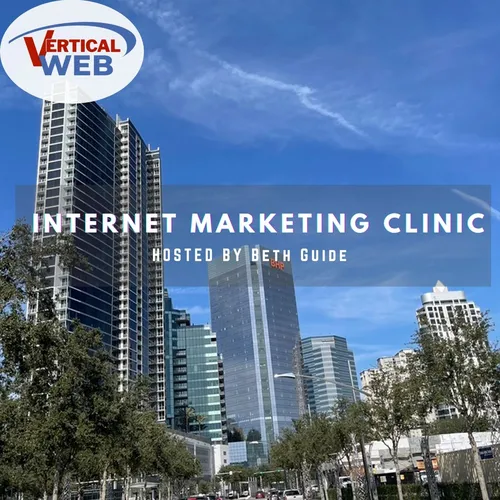Episode 216: E-commerce for Businessowners
- Author
- Beth Guide
- Published
- Thu 29 Sep 2022
- Episode Link
- https://www.verticalweb.com/episode-216-e-commerce-for-businessowners
If you’re running an e-commerce website, then you’ve got competition. At last count, there were more than 20 million e-commerce sites in operation around the globe. Every one of those websites has the same goal - stand out, attract traffic and pick up conversions in the process.
With millions of sites crowding the online picture, it’s never been more important to pursue best e-commerce practices when developing and marketing a website. That’s what we’re going to go over, along with some tips to help Google find and rank your e-commerce site.
Table of Contents
Add a header to begin generating the table of contents
https://www.youtube.com/watch?v=luEGhS1R9ww
What is an e-commerce website?
We’re going to be talking about e-commerce websites here, so let’s get the definition straight. Fortunately, it’s an easy concept to understand. E-commerce sites are those focused on selling a product or service to clients (other businesses or consumers), using a set of tools that make the process as simple and efficient as possible.
An e-commerce website should provide the following functionality:
Allow users to select and add products to their shopping cart.
Securely process orders and payments.
Manage shipping and provide shipping details to the user.
Provide customer service to users.
There are additional functions that e-commerce sites can perform. For example, an e-commerce site may allow people to create a profile, save previous order details for one-click ordering or let buyers redeem discount codes.
In general, though, if your website sells a product or service, and it allows users to do this using a shopping cart and payment portal - you’ve got an e-commerce site.
To support a successful e-commerce site, you need the right platform
Now that we’ve defined e-commerce, what does an effective e-commerce site look like? It looks like one built on WordPress. Anything else will hold your site back.
There are tons of website creation platforms out there for business owners. Pretty much all of them make money by convincing business owners to use their platform. That means they’ll make big proclamations about how SEO “friendly” their site is or how easy it is to get started.
Here’s the problem: Almost every single site creation platform out there is poorly optimized for Google-centric SEO. If you’re using Shopify, Wix, Weebly, Squarespace or any other popular site creation platform, your site is already facing serious SEO headwinds.
WordPress sites now blanket more than a third of the internet, and it’s the leading platform for e-commerce websites, too. Because WordPress is so ubiquitous, Google works hard to understand how WordPress websites are built and designed. Google’s familiarity with WordPress gives WordPress sites a major crawling and indexing advantage, which means better overall ranking potential.
In summary, Google prefers WordPress sites because it can understand them better. If you’re using any other platform, you’re making it that much harder for Google to figure out what your business does and what it sells.
Choose organic when it comes to website traffic
So search engines understand and rank WordPress websites better. So what? Adwords work with Wix or Shopify sites and you can get traffic that way.
It’s true that Adwords can pull additional traffic toward sites built in most platforms, but you’re paying for that traffic. And if your site is operating in a competitive space with competitive keywords to fight for, your ad costs can be eye-popping. We’re talking thousands of dollars every month to sustain traffic flow to your site. Even worse, your pay-per-click (PPC) expenses can, and likely will, change from month to month depending on how your ads do. It’s difficult to budget for this.
That’s why digital marketing professionals prioritize organic search traffic for their clients.
What is organic traffic and why is it valuable?
